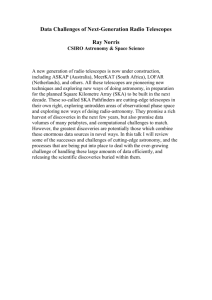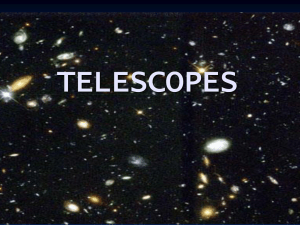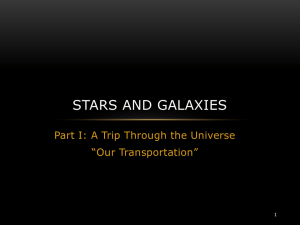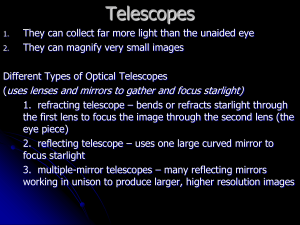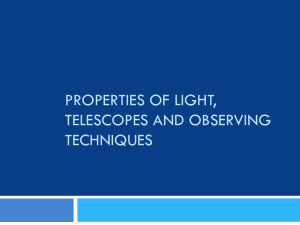Earth vs Space Telescopes
advertisement
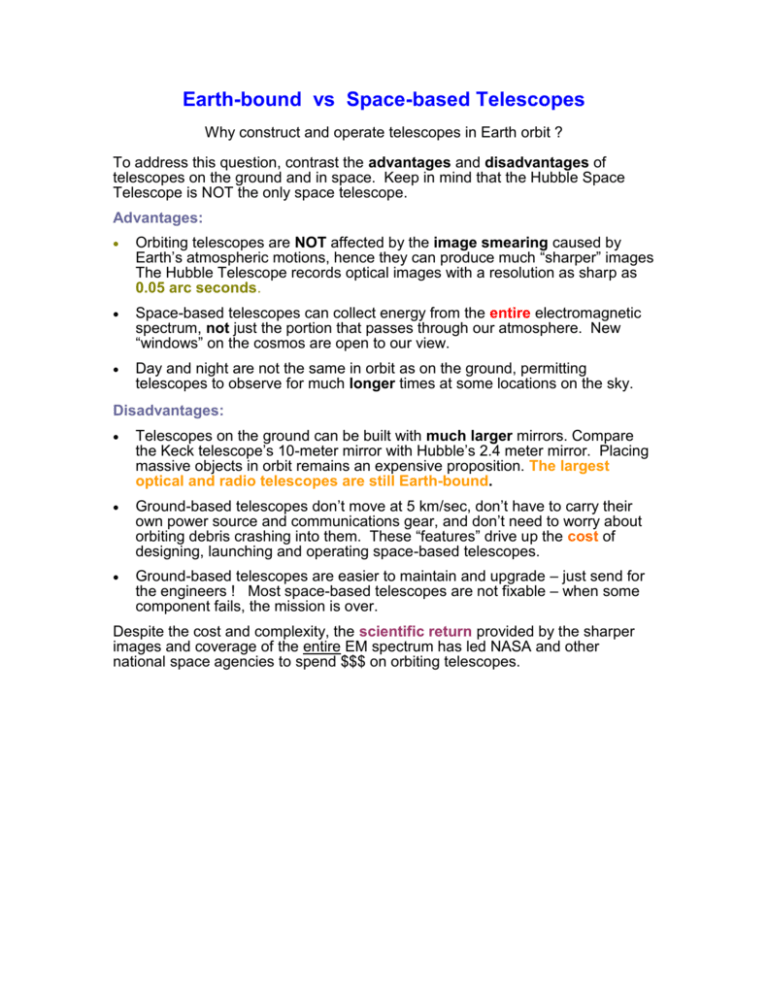
Earth-bound vs Space-based Telescopes Why construct and operate telescopes in Earth orbit ? To address this question, contrast the advantages and disadvantages of telescopes on the ground and in space. Keep in mind that the Hubble Space Telescope is NOT the only space telescope. Advantages: Orbiting telescopes are NOT affected by the image smearing caused by Earth’s atmospheric motions, hence they can produce much “sharper” images The Hubble Telescope records optical images with a resolution as sharp as 0.05 arc seconds. Space-based telescopes can collect energy from the entire electromagnetic spectrum, not just the portion that passes through our atmosphere. New “windows” on the cosmos are open to our view. Day and night are not the same in orbit as on the ground, permitting telescopes to observe for much longer times at some locations on the sky. Disadvantages: Telescopes on the ground can be built with much larger mirrors. Compare the Keck telescope’s 10-meter mirror with Hubble’s 2.4 meter mirror. Placing massive objects in orbit remains an expensive proposition. The largest optical and radio telescopes are still Earth-bound. Ground-based telescopes don’t move at 5 km/sec, don’t have to carry their own power source and communications gear, and don’t need to worry about orbiting debris crashing into them. These “features” drive up the cost of designing, launching and operating space-based telescopes. Ground-based telescopes are easier to maintain and upgrade – just send for the engineers ! Most space-based telescopes are not fixable – when some component fails, the mission is over. Despite the cost and complexity, the scientific return provided by the sharper images and coverage of the entire EM spectrum has led NASA and other national space agencies to spend $$$ on orbiting telescopes.
